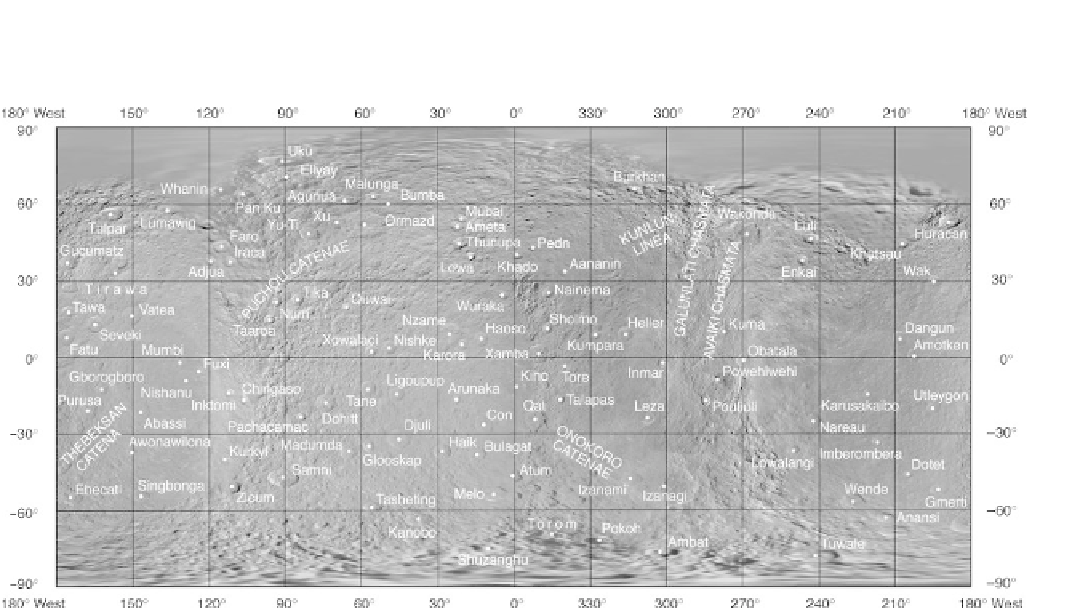Geology Reference
In-Depth Information
Figure 9.34. An image mosaic of Rhea with key place names (from Roatsch et al.,
2009
).
Figure 9.35. A Cassini image of Rhea
s terrain in the sub-Saturn
hemisphere showing that the bright wispy features are steep slopes
where fresh ice is exposed; in the lower left part of the image is
Inmar, a central-peak crater 55 km in diameter (NASA PIA12809).
'
Figure 9.36. A view of a heavily modi
ed central-peak crater on
Rhea; the area shown is about 130 km across (NASA Cassini
PIA12742).
360 km Tirawa (
Fig. 9.37
) which has been heavily bat-
tered by superposed impacts (
Fig. 9.38
).
from impacts or changes in global volume related to the
formation of different phases of ice.
Much of Rhea
'
is cratered terrain is in equilibrium, and
most of the larger craters display central peaks, scalloped
walls, and degradation by superposed impacts (
Fig. 9.36
).
At least two basin-sized impacts are present, including the
9.7.5 Iapetus
Iapetus (
Fig. 9.39
) is 1,436 km in diameter, nearly the twin
of Rhea in size, but its lower density of ~1.2 g/cm
3
suggests




